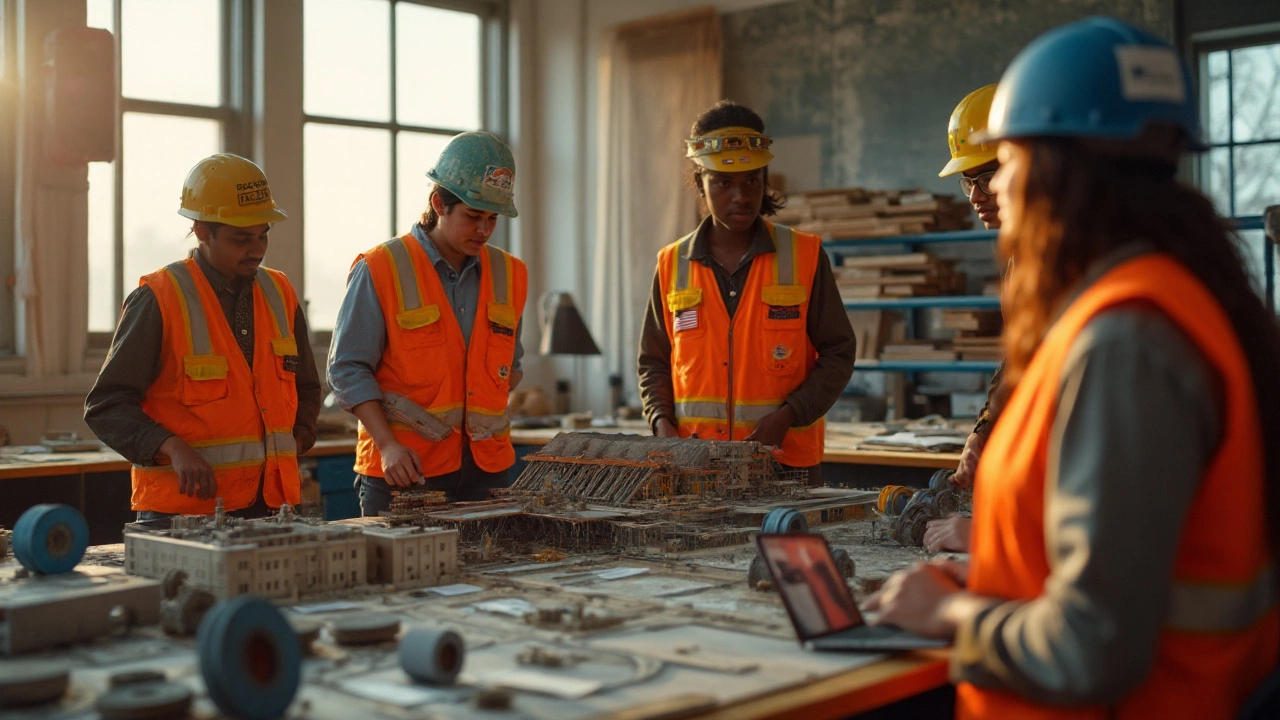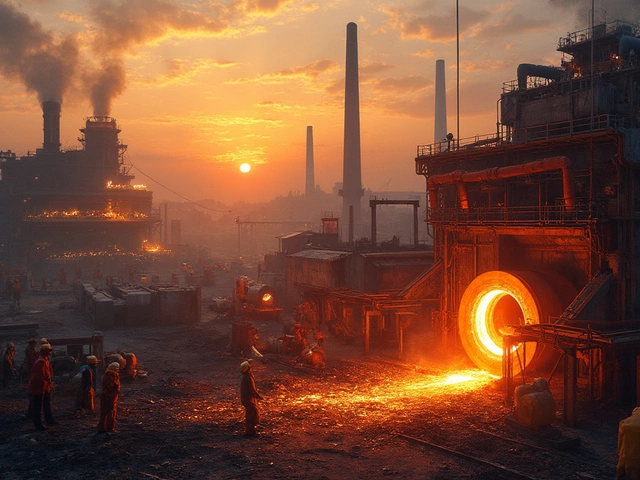You’re here for a straight answer on where U.S. Steel is putting its new plant, and whether it’s real, under construction, or already running. Short version: it’s in Osceola, Arkansas, inside Mississippi County, on the existing Big River Steel campus along the Mississippi River. The longer version matters too-what’s getting built, when it ramps, what they’ll make, and how you can plug in (jobs, supplier bids, local impacts).
If you only want the location, you’ll get it in the TL;DR below. If you also need status, capacity, and what to do next, I’ll walk you through that in plain English.
- If you’re just here for the quick answer to the U.S. Steel new plant location: Osceola, Arkansas (Mississippi County).
- Status in 2025: commissioning began in late 2024 and continues through 2025. Hiring and downstream line ramps are ongoing.
- What’s being built: a 3-million-ton-per-year electric-arc-furnace (EAF) mini mill (“Big River 2”) plus the InduX electrical steel line on the same campus.
- Why Arkansas: river/rail/truck access, low power costs, scrap supply, and strong state/county incentives.
- Who said so: U. S. Steel press releases, Arkansas Economic Development Commission, Mississippi County announcements, and company earnings calls in 2024-2025.
The short answer: where the new plant is
U.S. Steel’s new sheet mill is in Osceola, Arkansas, within Mississippi County, on the Big River Steel campus. The site sits near the Mississippi River with barge access, and it’s tied into rail and interstate trucking corridors. U.S. Steel bought into Big River Steel and chose to place the new mill right next door, so it could share logistics, energy, and workforce advantages rather than start from scratch somewhere else.
If you remember the headlines calling it a “new mini mill” or “Big River 2,” this is that project. The company publicly confirmed the location after a competitive site process, citing the campus economics as a key reason. Since then, ground was broken, the hot end and rolling assets have moved through commissioning, and downstream finishing lines keep ramping.
For anyone looking at a map: think northeast Arkansas, in the heavy-industry corridor that also hosts steel from Nucor and others. The county is a steel hotspot for a reason-fast permitting, pro-manufacturing leadership, and infrastructure that actually fits a mill of this scale.
What’s being built and when it comes online
Two big pieces to know:
- Big River 2 (the new mini mill): two EAFs, a modern caster, a hot strip mill, and downstream finishing that integrates with the broader Big River campus. Designed annual capacity: roughly 3 million short tons of flat-rolled sheet.
- InduX (electrical steel): a non-grain-oriented (NGO) electrical steel line aimed at EV motors and high-efficiency applications. Commissioning began in 2024 and continues through 2025 as qualifications with automakers and motor makers ramp.
Why it matters: EAF sheet mills are the growth engine of U.S. flat steel. They melt scrap and prime metallics (like pig iron or HBI), not iron ore in a blast furnace. That means lower emissions and more flexible output. Pair that with electrical steel-used in motors, generators, and transformers-and you get a campus built for the EV and electrification cycle, not just standard steel coil.
Commissioning isn’t a single switch flip. It’s a staged process: melt shop heat-ups, caster straightening out strand performance, rolling mill threading and gauge control, and then coating and annealing lines getting product approved by customers. Expect a steady ramp through 2025 as the mill chases stable yields, consistent quality, and automotive-grade approvals.
| Item | Details (as of Sep 2025) |
|---|---|
| Project name | Big River 2 (new mini mill) + InduX (electrical steel line) |
| Location | Osceola, Mississippi County, Arkansas (Big River Steel campus) |
| Investment | ~$3 billion for the new mini mill; electrical steel line announced add-on at the same campus |
| Capacity | ~3 million short tons/year (sheet); InduX designed for NGO electrical steel (automotive and industrial) |
| Jobs | ~900+ permanent roles at full run-rate; several thousand construction roles during buildout |
| Key milestones | Site selection announced 2021-2022; groundbreak 2022; hot commissioning late 2024; staged ramp through 2025 |
| Products | Hot-rolled, cold-rolled, coated sheet; NGO electrical steel for motors/EVs |
| Logistics | Barge (Mississippi River), rail, interstate truck access |
| Sources | U. S. Steel press statements; Arkansas Economic Development Commission; Mississippi County briefings; company earnings calls 2024-2025 |
What about product mix? Expect a heavy tilt toward automotive and appliance grades once qualifications stick. Electrical steel needs long test cycles with OEMs, especially for EV traction motors, so that ramp will be careful by design. Standard sheet grades will fill in early to keep the lines warm and learning curves moving.

Why Arkansas won: logistics, power, incentives, and scrap
Here’s the blunt truth about siting a steel mill: freight, power, people, and permits beat almost everything else.
- Freight: Being on the river cuts inbound and outbound costs. Rail and highway add flexibility. Mill margins live and die by transport spreads.
- Power: EAFs drink electricity. Arkansas offers competitive industrial rates and grid access that can handle big loads. That lowers melts cost and improves uptime.
- Scrap and metallics: The South and Midwest feed a steady stream of automotive and industrial scrap. Merchant pig iron and HBI are accessible by barge. That metal mix lets an EAF hit tight chemistries for automotive sheet.
- Permitting and support: Mississippi County lean into heavy industry. The state stacked incentives to land the project. That speeds timelines and lowers risk.
- Workforce: This county already runs steel. Local programs produce operators, electricians, and maintenance techs who know mills. That shortens the ramp curve.
Could the plant have gone somewhere else? Sure. But stacking all these advantages in one place is rare. It’s the same cluster logic that made the county a steel hub. Once you’ve got one world-class mill, the next piece of equipment is cheaper and faster to stand up nearby.
On sustainability: EAF sheet has a lower carbon intensity than blast furnace steel. The campus can blend scrap with merchant pig iron/HBI to hit grade, and over time, as low-carbon metallics get cheaper, the footprint shrinks further. Don’t expect miracles on day one, but the direction of travel is obvious.
How to follow progress, get hired, or sell into the project
Different readers want different things from this news. Here’s how to get what you need without wasting time.
Job seekers
- Search the company’s official careers portal for “Osceola” and “Big River.” Filter by operations, maintenance, and electrical roles. Avoid third-party job boards unless they link back to the company site.
- Watch for commissioning-era roles: melt shop operators, caster/rolling technicians, automation controls, reliability engineers, and quality techs. These are the gating roles during ramp.
- Prep for assessments: mills test for safety mindset, mechanical aptitude, and shift readiness. Build your examples around lockout/tagout, fall protection, and past shift work.
- Certs help, but stories help more: have two clean examples of solving a production problem under time pressure and one example of stopping work for safety.
- Pro tip: follow local training partners. Community colleges and workforce boards often run mill-specific upskilling funded by the county/state. They’ll know about hiring waves before the general public.
Suppliers and contractors
- Vendor registration: get on the company’s supplier portal and complete pre-qualification. Incomplete safety and insurance docs are the #1 reason bids never get read.
- Scope sweet spot during ramp: refractory services, roll grinding, MRO spares, NDT, water treatment, scrap handling, yard ops, and specialty cranes. For finishing, think oils/chemicals, packaging, and coil handling.
- Compliance basics: ISNetworld/Avetta-equivalent data, OSHA logs, TRIR, and drug/alcohol policies. If you can’t show your safety math, you won’t get in the gate.
- Payment terms: expect standard net terms with options to accelerate via supply chain finance. Price in that cash cycle honestly.
- Pro tip: track county-level bid notices and local industrial contractors. Many “big” packages are already awarded to OEMs (think melt shop/rolling line builders), but dozens of service and maintenance packages open up during ramp and steady-state.
Residents and local businesses
- Traffic and noise peak during construction and taper during steady-state. Most heavy moves go by barge/rail; truck peaks follow shift changes.
- Ask for the plant’s community hotline and quarterly update meetings. These are standard for big mills and a good venue to raise practical concerns.
- Small business angle: service trades, lodging, food, light industrial rental, and safety training all see a lift during ramp. Think six to eighteen months of elevated demand.
Analysts and investors
- Watch the quarterly calls for: yield and uptime, product mix, automotive qualifications, and InduX order books. The margin story turns on those four levers.
- Rule of thumb: a new EAF sheet mill’s first full year rarely shows “steady-state” margins. Expect a curve: negative/low early quarters, inflection as yields rise and higher-value grades kick in.
- Downside checks: scrap spreads, power costs, and any delays in electrical steel customer approvals. These are the usual tripwires.

FAQ and next steps
FAQ
Where is the new U.S. Steel plant?
Osceola, Arkansas, in Mississippi County, on the Big River Steel campus.
Is the plant running yet?
Commissioning started in late 2024. The site continues to ramp through 2025, with new lines and grades coming online in stages.
What’s the designed capacity?
About 3 million short tons per year of sheet from the new mini mill. The InduX electrical steel line adds NGO electrical steel capacity for EVs and industrial motors.
How many jobs?
Roughly 900+ permanent roles at steady-state. Construction headcount peaked in the low thousands.
What products will it make?
Hot-rolled, cold-rolled, galvanized/coated sheet, plus non-grain-oriented electrical steel aimed at EV and industrial markets.
Why did they choose Arkansas?
River/rail/truck access, competitive power, skilled workforce, scrap access, and state/county incentives.
Is this tied to the company’s broader strategy?
Yes. The campus shifts U.S. Steel deeper into EAF sheet and electrification-grade steels. It complements, not copies, traditional blast furnace sites.
What’s a realistic ramp timeline?
New mills often spend 12-24 months dialing in yields and winning customer approvals. Expect steady gains through 2025 and into 2026.
What sources confirm this?
U. S. Steel press releases; Arkansas Economic Development Commission updates; Mississippi County incentive actions; and U.S. Steel quarterly earnings commentary in 2024-2025.
Next steps
- If you’re a job seeker: Set alerts on the company careers site for “Osceola” and “Big River.” Tailor your CV to EHS and reliability wins. Be ready for shift work.
- If you’re a supplier: Complete vendor onboarding, then pitch a narrow, high-value scope with clean safety stats. Meet insurance requirements before you quote.
- If you’re local: Plug into county briefings and community meetings. Ask about construction schedules and traffic windows. There’s usually a point person for that.
- If you’re an analyst: Track scrap/power spreads, automotive qualifications, and InduX adoption. Those tell you more than one-off spot prices.
Troubleshooting
- Seeing conflicting dates online? Check the company’s latest earnings call transcript and state economic development updates. Older articles often stick at the top of search results.
- Not getting supplier callbacks? Your pre-qualification may be incomplete. Fix safety, insurance, and W-9/Tax details first; then circle back to sourcing.
- Job offer seems sketchy? Verify it runs through the official company careers portal. No legitimate offer will require you to buy equipment or pay a fee.
- Unsure about product availability? Ask for current grade lists and lead times from sales. Early ramp means some grades are limited until qualifications land.
Last bit people tend to miss: new mills change a region’s logistics overnight. Expect more barge traffic, tighter scrap markets within trucking radius, and new lanes for coil. If you’re in trucking, scrap, or service, map those lanes now-being first usually beats being perfect.





Write a comment